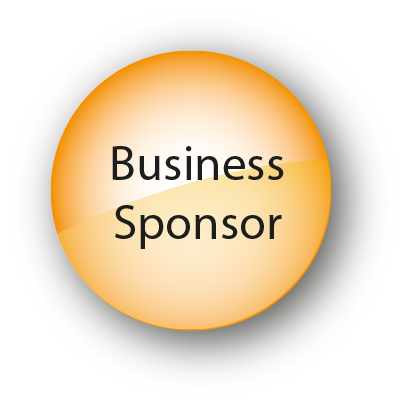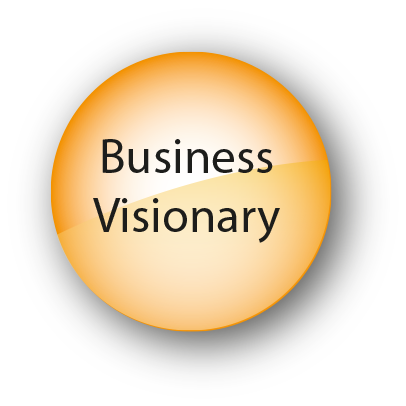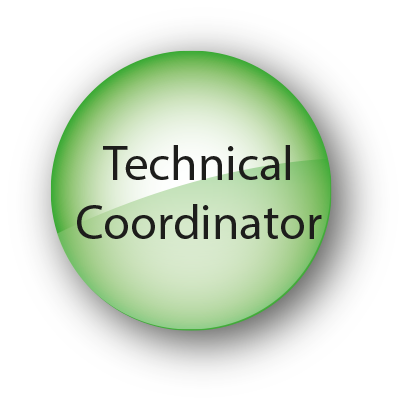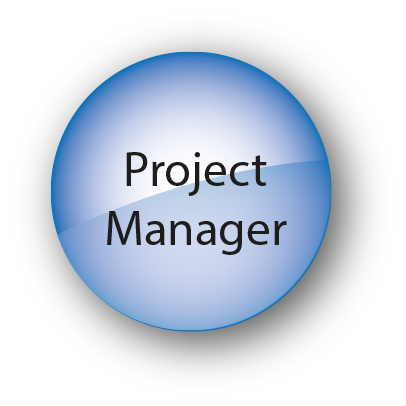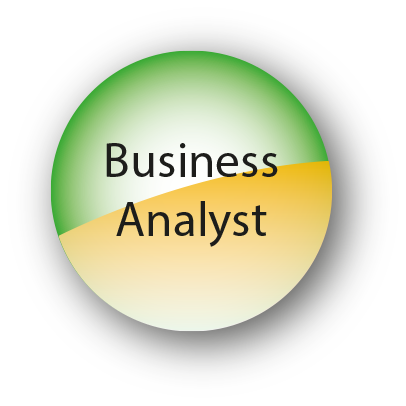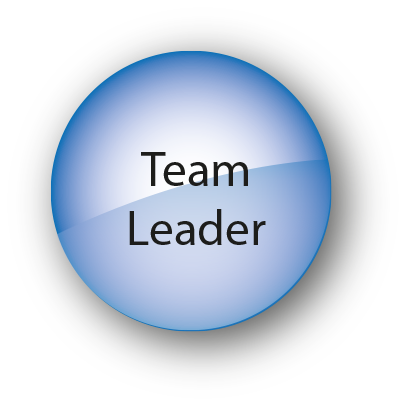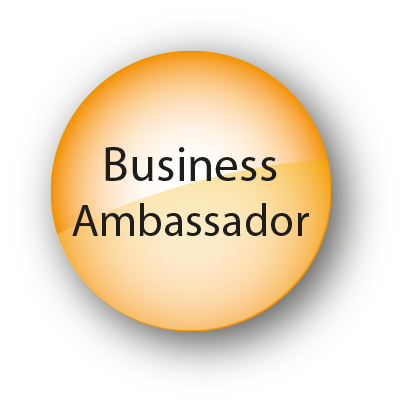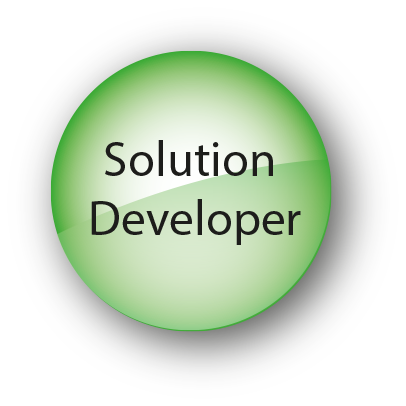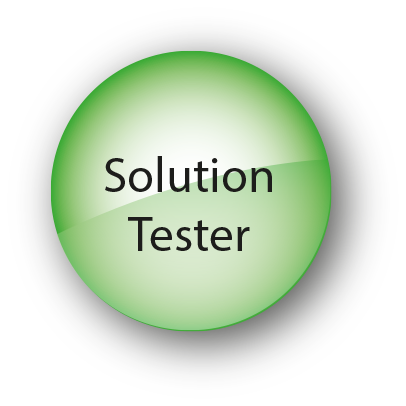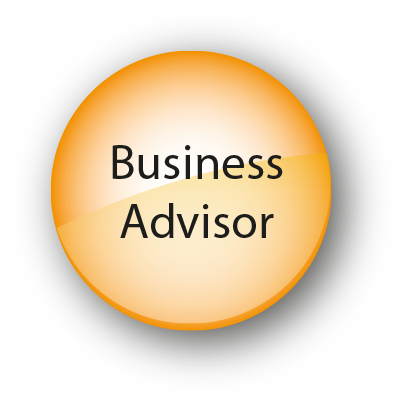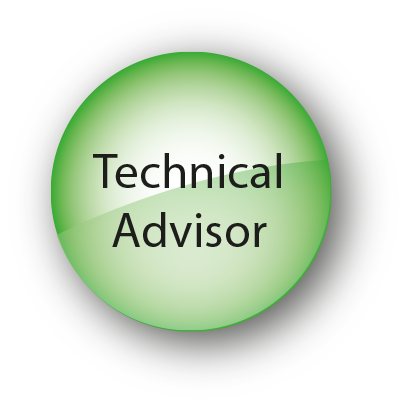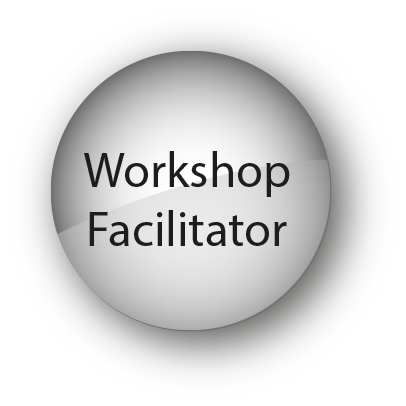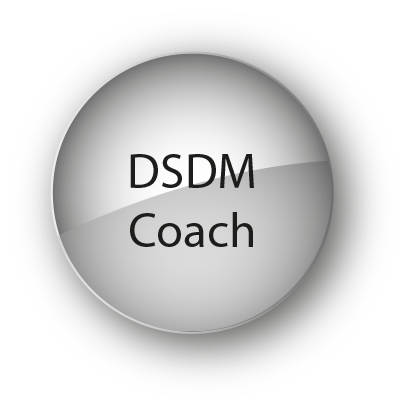Chapter 7: Roles and Responsibilities
7 Roles and Responsibilities
7.1 Introduction
People working together effectively are the foundation of any successful project. DSDM recognises this and assigns clear roles and responsibilities to each person in a project, representing the business interests, the solution/technical interests, the management interests and the process interests. Everyone involved in a DSDM project works very closely together in order to break down potential communication barriers.
The best solutions emerge from self-organising, empowered teams. However, these teams, and the people within them, must actively take on the responsibility for their empowerment within the boundaries that have been agreed. At the same time, it is important they:
- Respect each other’s knowledge, experience, skills and opinions
- Take personal responsibility for their work and the dependence of the other team members on them
- Have the courage to challenge ways of working, to improve their team collaboration and working processes
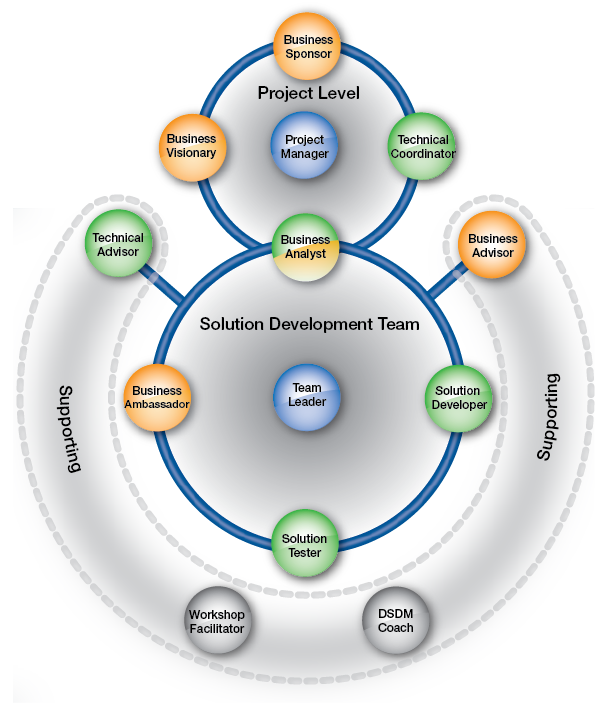 Figure 7a - The DSDM team model
Figure 7a - The DSDM team model
7.2 The DSDM Team Model Explained
7.2.1 Role colour scheme - to represent areas of interest
The colour scheme in figure 7a is as follows:
- Orange - Business interests, roles representing the business view
- Typically taken by business personnel, e.g. Business Ambassador providing day-to-day business direction, Business Visionary providing high-level direction and a view of the future.
- Green - Solution/technical interests, roles representing the solution/technical view
- Contributing to the technical development of the solution, e.g. Solution Developers creating the solution, Technical Coordinator providing technical leadership and direction.
- Blue - Management interests, roles representing the management/leadership view
- Facilitating the management/leadership aspects of the project, e.g. Project Manager and Team Leader following the DSDM process and managing/leading a DSDM project (using Agile leadership competencies).
- Grey - Process interests, roles representing the process view
- Facilitating the process aspects of the project, e.g. Workshop Facilitator managing the workshop process, DSDM Coach embedding the DSDM framework
- Mix of two colours – A role that straddles two separate areas of interest, e.g. Business Analyst, has both a business and a solution/technical focus
7.2.2 Role Categories
7.2.2.1 Project-level roles
In figure 7a, the project-level roles (Business Sponsor, Business Visionary, Technical Coordinator, Project Manager and Business Analyst) are the directors, managers and coordinators of the work for the project, where necessary. They may be part of a project board or steering committee for the project and, collectively, have authority to direct the project. They are responsible for the governance of the project, liaising with governance authorities outside of the project. The Business Sponsor provides the overall strategic direction and controls the funding/budget for the project. The Business Visionary and the Technical Coordinator hold the business and technical visions, respectively, for the project. The Project Manager ensures that project funds are used effectively to create the envisaged solution within the agreed timescale.
The Business Analyst is intentionally positioned as part of the project level as well as part of the Solution Development Team. This allows the Business Analyst to, for example, help the business to formulate the Business Case, and also to be involved in assisting the business in defining their requirements during feasibility and foundations, sometimes before the full Solution Development Team. is assigned. The role then continues in supporting the Solution Development Team alongside the project-level roles, as the more detailed requirements emerge.
All roles at the project level need to adopt the facilitative, empowering leadership style which allows Agile teams to learn as they go and reflect, adapt and enhance process. They need to ensure the freedom of the Solution Development Team. to do the job, getting to an end point by its own means, within an empowerment framework for the team.
The project-level roles:
- Build projects around motivated individuals
- Trust the teams, confident that everyone will work to the best of their ability
- Give the teams the environment and support they need
7.2.2.2 Solution Development Team roles
The Solution Development Team roles are Business Ambassador, Solution Developer, Solution Tester, Business Analyst and Team Leader. These roles form the “engine room” of the project. They shape and build the solution and are collectively responsible for its day-to-day development and for assuring its fitness for business purpose. There may be one or more Solution Development Teams within a project. Each team will include all Solution Development Team roles and cover all their responsibilities.
The membership of each Solution Development Team should be stable throughout a project, however, in the worst case, each Solution Development Team should remain stable for a Project Increment. Each member of the Solution Development Team is an empowered individual who takes personal ownership for their area of responsibility and represents the interests of their peers.
7.2.2.3 Supporting roles
The supporting roles (Business Advisors, Technical Advisors, Workshop Facilitator and DSDM Coach) provide assistance and guidance to the project on an ad hoc basis throughout the lifecycle. The Advisor roles may be filled by one or more subject matter experts, as necessary. The Advisor roles are not the empowered decision-makers – that is the responsibility of the roles within the Solution Development Team – but they advise the Solution Development Team in areas where specialist expertise is needed (e.g. legal and compliance matters, technical knowledge, business-specific rules and regulations). The supporting roles engage with the project as and when necessary. For example, a Business or Technical Advisor will be actively involved during Foundations and then for the particular Timeboxes where their expertise is needed to properly shape the Evolving Solution.
7.2.3 Levels of engagement
All DSDM roles need to be appropriately engaged in the project sufficiently to fulfil the responsibilities of their role. Project-level roles need to be engaged sufficiently to ensure that the ongoing work of the project remains aligned to the business need, is generating a solution to the agreed quality and continues to be viable in terms of the Business Case. Project-level roles therefore need to be engaged in high-level reviews and planning sessions, and perhaps in more detailed sessions where key issues and strategic decisions need their input. Their involvement is not normally needed or expected day to day but is more likely to be focussed around the beginning and end of Timeboxes and perhaps at key review points within them. Solution Development Team roles need to be actively engaged in the project on a day-to-day basis working at the detailed level; shaping, building, reviewing and testing the Solution Increment delivered at the end of each Timebox. All roles must attend the Daily Stand-up in order to maintain a common understanding of progress and any issues and, as a self-organising team, agree detailed plans and actions needed to meet their delivery commitments. Continuous, open, honest communication and day-to-day collaboration are the key to making good progress with transparency of progress and work being important in demonstrating control. Where project-level roles do engage at a lower level of detail, it is important that they do so as observers and leaders and the owners of issues rather than as managers of the team or the work being undertaken.
7.2.4 Fulfilling the roles
One DSDM role does not necessarily mean one person. One person may take on one role, or one person may cover two or more roles. One role may be split between two or more people. However, where a role is split between individuals, it is vital that these individuals communicate and collaborate closely.
|
For example: On a large IT project, the Technical Coordinator’s responsibilities may be allocated to more than one person, e.g. the System Designer/Architect, the Networks Manager, the Infrastructure Manager etc. On a branding project, Solution Developer responsibilities may be split, with one Solution Developer focusing on logo design, another on key marketing messages. |
Conversely, in smaller projects, one person often performs more than one role.
|
For example: One person may carry out the responsibilities both of the Project Manager and the Team Leader. However, some roles are typically only fulfilled by one person, whatever the size of the project, e.g. there should only be one Business Visionary (rather than a group of visionaries) and one Business Sponsor. (Although it is also often true that one person fulfils both the Business Sponsor and the Business Visionary roles). |
Issues such as geographical constraints or staff availability can affect the creation of the ideal project team, but it is strongly recommended that all the roles are considered and that their individual responsibilities are all understood and accepted as appropriate. The role definitions can be used as the basis for personal terms of reference for a project.
7.3 Business Sponsor
The Business Sponsor should be committed, supportive and available for the duration of the project, providing a clear escalation route. On smaller projects, the Business Sponsor role will always be fulfilled by a single person. However, on larger projects or in complex organisations, the Business Sponsor’s financial responsibilities may be fulfilled by a higher authority such as an investment board or an executive committee. In this circumstance, DSDM expects the business to agree a specific person to “front” the role. This ensures the project deals with a single ultimate decision-maker and a single ultimate escalation point, and is protected from a lack of clarity through differing views about the project.
7.3.1 Responsibilities
- Owning the Business Case for the project
- Ensuring ongoing viability of the project in line with the Business Case
- Holding the budget for the project
- Ensuring that funds and other resources are made available as needed
- Ensuring the decision-making process for escalated project issues is effective and rapid
- Responding rapidly to escalated issues and being the ultimate point for resolution of conflict within the project
- Empowering the business roles within the project, to appropriate levels, within their responsibilities
- Keeping themselves informed of progress and issues, e.g. by attending demonstrations at the end of Timeboxes and asking questions of other roles who are more actively engaged
7.4 Business Visionary
7.4.1 Responsibilities
- Defining the business vision for the project
- Communicating and promoting the business vision to all interested and/or impacted parties
- Monitoring progress of the project in line with the business vision
- Owning the wider implications of any business change from an organisational perspective
- Contributing to key requirements, design and review sessions, particularly where aspects of the solution being considered address key elements of the business vision Identifying and owning business-based risk
- Defining, and approving changes to, the high-level requirements in the Prioritised Requirements List, i.e. any change that affects the baselined scope or significantly alters the balance of priorities
- Ensuring collaboration across stakeholder business areas within the scope of the project
- Ensuring business resources are available to the project as needed
- Promoting the translation of the business vision into working practice, i.e. ensuring full business adoption of the solution created by the project
- Empowering the business roles within the Solution Development Team, to appropriate levels, within their responsibilities
- Where the Solution Development Team cannot agree, acting as an arbiter of business differences related to the business need and the way this is addressed in the Evolving Solution
7.5 Technical Coordinator
7.5.1 Responsibilities
- Agreeing and controlling the technical architecture
- Determining the technical environments
- Advising on and coordinating each team’s technical activities
- Identifying and owning architectural and other technically based risks
- Advising on the achievability of non-functional requirements
- Working with the Business Analyst to evaluate the technical options and decide the best way to turn the high-level business requirements into a technical solution
- Advising on and coordinating each team’s approach to estimating, to reflect technical best practice and current technical understanding
- Promoting appropriate standards of technical best practice
- Controlling the technical configuration of the solution
- Approving the solution as technically fit for purpose prior to deployment
- Managing technical aspects of the transition of the solution into live use
- Empowering the technical roles within the Solution Development Team to appropriate levels within their responsibilities
- Acting as the final arbiter of technical differences between Solution Development Team members
7.6 Project Manager
Although the Project Manager role is focused on getting the project delivered, appropriate sourcing of the role will depend on the skills and knowledge required and on the project itself; the Project Manager may come from the business, or may come from the solution/technical side. For some projects, especially formal contractual projects being delivered by external suppliers, there may be two Project Managers, one from the business (the customer) and one from the solution/technical side (the supplier).
It is usual that the Project Manager takes responsibility throughout the duration of the project. This must include both business and technical delivery aspects of the project, from Foundations (if not Feasibility) through to Deployment.
7.6.1 Responsibilities
- Ensuring effective and timely communication and provision of information to project governance authorities (Business Sponsor, project board, steering committee etc.) and stakeholders not actively engaged in the project with the agreed and appropriate level of frequency and formality
- Performing high-level project planning and scheduling, but not detailed Timebox planning or task planning
- Collaborating with the Solution Development Team and other appropriate stakeholders to create and agree the Delivery Plan (the schedule of Project Increments and the Timeboxes within them)
- Monitoring progress against the baselined Delivery Plan
- Managing risk and any issues as they arise, collaborating with senior business or technical roles as required to resolve them
- Motivating and ensuring empowerment of the teams to meet their objectives
- Monitoring and ensuring appropriate involvement and communication between required members of the multi-disciplinary Solution Development Team
- Handling problems escalated from the Solution Development Team
- Providing help and guidance to the Solution Development Team where difficult situations arise
- Attending stand-up meetings, as appropriate, to keep a current understanding of the team’s progress and issues, and to flag up to the team, where necessary, any important external issues that that team need to be aware of
7.7 Business Analyst
7.7.1 Responsibilities
- Assisting the Business Visionary in the formulation and promotion of the business vision, as appropriate
- Modelling the organisation’s current and future state in the area of the solution and identifying opportunities, risks and impacts
- Working with the Business Visionary and the Solution Development Team to formulate and communicate solution options
- Working with the project-level roles in formulating the Business Case and organising Benefits Assessments
- Supporting and facilitating unambiguous and timely communication between business and technical participants in the project
- Ensuring the requirements defined are of good quality and are analysed and managed appropriately
- Managing development, distribution and baseline approval of all communication related to business requirements and their interpretation, with particular focus on ensuring the prioritised requirements list is kept up to date, as the detail expands and evolves
- Ensuring that the business and organisational implications of day-to-day evolution of the solution are properly modelled and thought through
- Ensuring the impact of business decisions is reviewed in the context of the project
- Ensuring the business and technical components of the solution collectively provide a cohesive whole for the business
- Ensuring the non-functional requirements are achievable and subsequently met
- Taking responsibility for tracking business requirements through to business acceptance
- Liaising with the Business Visionary in organising support for the solution through implementation into live use
7.8 Team Leader
7.8.1 Responsibilities
- Facilitating the team focus on the on-time delivery of agreed products
- Encouraging full participation of team members within their defined roles, responsibilities and empowerment
- Ensuring that the Iterative Development process is properly focused and controlled
- Ensuring that all testing and review activity is properly scheduled and carried out
- Managing risks and issues at the Timebox level, escalating to the Project Manager, Business Visionary or Technical Coordinator as required
- Monitoring progress on a day-to-day basis for all team activities
- Facilitating communication of team progress with the Project Manager
- Facilitating the daily stand-ups, ensuring they are timely, focussed and brief
- Facilitating reviews and retrospectives with the team
7.9 Business Ambassador
During the Evolutionary Development phase of the project, the Business Ambassador is the main decision-maker on behalf of the business. For this reason the Business Ambassador needs to be someone who is respected by their business peers and who has sufficient seniority, empowerment and credibility to make decisions on behalf of the business, in terms of ensuring the Evolving Solution is fit for business purpose. It is also important that the person fulfilling this role has the confidence to recognise where their own knowledge is insufficient and to bring in Business Advisors to support them.
Typically the Business Ambassador role is someone who is already busy. For this reason they must be able to commit the appropriate (and agreed) amount of time throughout Timebox development to help guide the Evolving Solution in the right direction to meet the business needs. For some projects, this may require a full-time commitment as the only way to meet the deadline. However this is unusual and actually introduces a risk that the Business Ambassador may become unaware of events occurring in the business. For most projects, the Business Ambassador commitment is a part-time one, at a level agreed during Foundations. But it is also important that where an Ambassador is committing time to the project, some of their normal workload can be delegated, so that all their work (day-to-day business and DSDM project) can be achieved in a normal working week. It is important that the amount of commitment expected is openly discussed and agreed at a workable level.
7.9.1 Responsibilities
- Contributing to all requirements, design and review sessions
- Providing the business perspective for all day-to-day solution development decisions
- Providing the detail of business scenarios to help define and test the solution
- Communicating with other users, involving them as needed and getting their agreement
- Providing day-to-day assurance that the solution is evolving correctly
- Organising and controlling business acceptance testing of the solution
- Taking responsibility for the creation of the business user and support documentation for the ultimate solution (this responsibility may be delegated, for example to a specialist such as a Technical Author, but the ultimate responsibility remains with the Business Ambassador)
- Ensuring business participants in the Deployed Solution are properly trained and supported
7.10 Solution Developer
7.10.1 Responsibilities
- Working with all other Solution Development Team roles to iteratively develop:
- The Solution Increment
- Models required for the properly controlled development of the solution
- Models and documents as required for the purpose of supporting the Deployed Solution in live use
- Testing the output of their own work prior to independent testing
- Agreeing and adhering to technical constraints
- Adhering to the organisation’s technical implementation standards and best practice
- Participating in any quality assurance work required to ensure the delivered products are truly fit for purpose
- Recording (and later interpreting) the detail of any
- Changes to the detailed requirements
- Changes to the interpretation of requirements which result in re-work within the solution
- Information likely to impact on the ongoing evolution of the solution
7.11 Solution Tester
7.11.1 Responsibilities
- Working with business roles to define test scenarios and test cases for the Evolving Solution
- Carrying out all types of technical testing of the solution as a whole
- Liaising with the Business Analyst and Business Ambassador to help clarify acceptance criteria for requirements
- Creating test products as appropriate, e.g. test cases, test plans and test logs
- Reporting the results of testing activities to the Technical Coordinator for quality assurance purposes
- Keeping the Team Leader informed of the results of testing activities
- Assisting the Business Ambassador(s) and Business Advisor(s) so that they can plan and carry out their tests well enough to ensure that the important areas are covered
7.12 Business Advisor
7.12.1 Responsibilities
Based on the specialism for which the Business Advisor has been engaged:
Providing specialist input into relevant:
- Requirements, design and review activities
- Day-to-day project decisions
- Business scenarios to help define and test the solution
Providing specialist advice on, or help with:
- Developing business user and support documentation for the ultimate solution
- Deployment of the solution releases into the business, as appropriate
7.13 Technical Advisor
7.13.1 Responsibilities
The Technical Advisor supports the Solution Development Team through the provision of detailed, and often specialist, technical input and advice with regards to:
- Requirements, design and review sessions
- The operational perspective for day-to-day decisions
- Operational or support scenarios to help define and test the solution
- Assurance that the solution is evolving correctly
- Operational acceptance testing
- Development of technical support documentation
- Training of technical operations and support staff
- Incremental Deployment of the solution releases, as appropriate
7.14 Workshop Facilitator
The Workshop Facilitator is responsible for managing the workshop process and is the catalyst for preparation and communication.The Facilitator is responsible for organising and facilitating a session that allows the par participants to achieve the workshop objective.
The Workshop Facilitator should be independent of the outcome to be achieved in the workshop.
7.14.1 Responsibilities
During each workshop:
- Facilitating the workshop to meet its objectives
- At the conclusion of each workshop
- Reviewing the workshop outcome against its objectives After each workshop
- Ensuring the workshop results are distributed to par ticipants and other agreed stakeholders, as necessary.
7.15 DSDM Coach
7.15.1 Responsibilities
- Providing detailed knowledge and experience of DSDM
- Tailoring the DSDM process to suit the individual needs of the project and the environment in which the project is operating
- Helping the team use DSDM practices and helping those outside the team appreciate the DSDM philosophy and values
- Helping the team work in the collaborative and cooperative way typical of DSDM and all Agile approaches
- Building DSDM capability within the teams at all levels
7.16 Summary
DSDM identifies roles in two dimensions – categories and interests.
Roles are grouped into three categories:
- Project roles
- Solution Development Team roles
- Supporting roles
Within a DSDM project, the different interests are represented using colours:
- Orange represents the business interests
- This covers the Business Sponsor, Business Visionary, Business Ambassador and Business Advisor roles
- Green represents the solution/technical interests
- This covers the Technical Coordinator, Solution Developer, Solution Tester and Technical Advisor roles
- Blue represents management interests
- This covers the Project Manager and Team Leader roles
- Grey represents process interests
- This covers the Workshop Facilitator and DSDM Coach roles
The Business Analyst role is coloured a mix of orange and green since this role often straddles the boundary between business and solution/technical interests.
On a DSDM project, one role may be fulfilled by several people, or one person may fulfil several roles.

